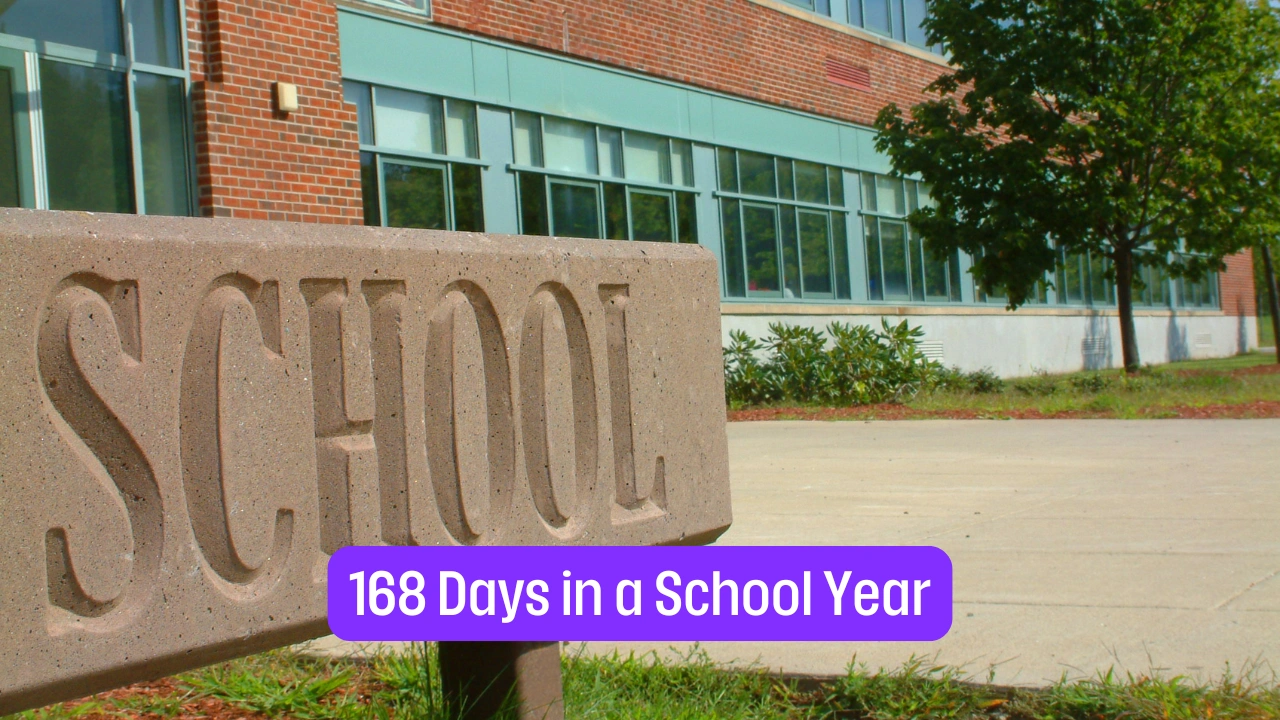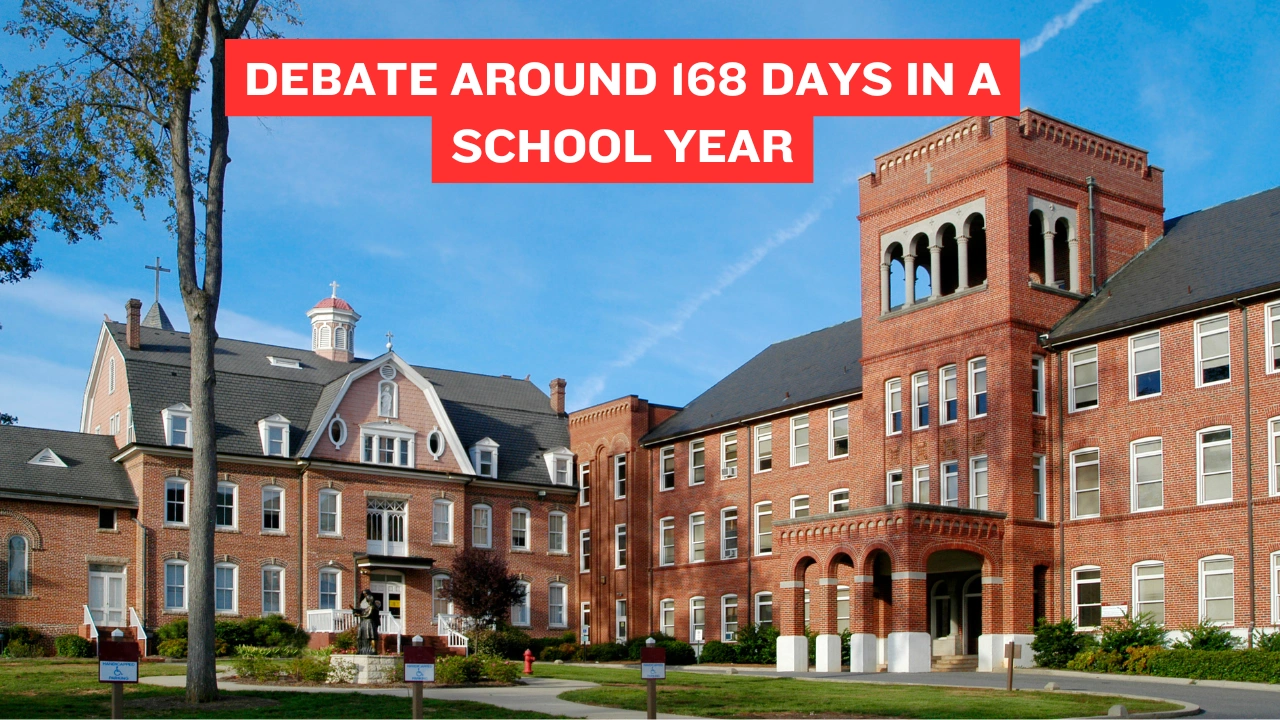168 Days in a School Year: What It Means and Why It Matters

A school year of 168 days is a topic that has sparked discussions among educators, parents, and policymakers. While some schools adopt this shorter schedule, it stands out compared to the more standard 180-day calendar followed in many educational systems globally. Understanding the implications of 168 days in a school year is essential for evaluating its impact on students, teachers, and the education system as a whole.
What Does 168 Days in a School Year Mean?
The term refers to the number of instructional days students are expected to attend school during an academic year. In many regions, the standard school year lasts around 180 days, making 168 days a relatively shorter schedule. This change can occur due to regional policies, budget constraints, or a focus on alternative school calendars.
In practice, 168 days in a school year is still designed to meet educational goals. Schools adopting this schedule often adjust their teaching methods, extend daily hours, or reduce holiday breaks to ensure students receive a well-rounded education. However, the debate about its effectiveness continues, particularly concerning academic performance and overall student development.
Why Some Schools Adopt a 168-Day Calendar
Schools may shift to a 168-day school year for various reasons, each driven by practical or policy considerations. Budgetary constraints are a common factor. Shorter school years can reduce costs related to transportation, utilities, and staffing. In areas with severe weather conditions, schools may also shorten the academic year to account for lost days while ensuring students still meet academic requirements.
Another reason for this change is the implementation of year-round schooling. In this system, schools divide the 168 days into smaller terms, interspersed with frequent breaks. This approach helps reduce burnout among students and teachers while maintaining consistent learning.
Also Read: 23455 Breaking Waves Court Millville De Owner Stunning Beachfront
How 168 Days in a School Year Compares to Other Calendars
Globally, the length of the school year varies widely. For example:
| Country | Average School Days Per Year |
|---|---|
| United States | 180 |
| Japan | 220 |
| Finland | 190 |
| Germany | 185 |
| Schools with 168 Days | 168 |
The table above highlights how a 168-day school year is shorter than the international average. Critics argue this reduction might affect students’ ability to compete globally, especially in subjects like math and science.
Advantages of a 168-Day School Year
Despite its shorter length, a 168-day school year has potential benefits. It can reduce stress among students and educators. Shorter academic calendars allow for more flexibility in lesson planning and a better balance between academic and extracurricular activities. Additionally, schools often optimize learning time by focusing on core subjects and prioritizing interactive teaching methods.
Parents and students may also find shorter school years appealing due to extended family time or the opportunity to pursue hobbies and other interests. In rural areas, a 168-day school year allows students to assist their families with seasonal work, fostering a balance between education and real-world responsibilities.
Effect of a 168-Day School Year on Specialized Programs
A 168-day school year can challenge schools in implementing specialized programs like STEM and arts education, which often require extended time for hands-on activities and creative exploration. With fewer instructional days, schools may need to prioritize high-impact activities, integrate these subjects into core lessons, or offer extracurricular opportunities.
For STEM, shortened schedules might limit lab experiments and projects, while arts programs could struggle with reduced rehearsal time. However, innovative approaches, such as virtual tools and focused teaching strategies, can help ensure students still benefit from these critical programs, even within a condensed calendar.
Also Read: APL66K Future of Real-Time Data Analytics and Machine Learning
Parents’ Views on a 168-Day School Year
Parents have mixed opinions on the 168-day school year. Some appreciate the flexibility it offers, allowing more family time and opportunities for extracurricular activities. However, others worry about potential learning gaps and disruptions, especially for working families who rely on consistent school schedules. Confidence in the shorter calendar often depends on how effectively schools communicate their strategies and demonstrate positive academic outcomes.
Challenges of a 168-Day School Year
While the benefits are clear, the 168-day school year is not without challenges. One of the most significant concerns is the potential for reduced instructional time. Educators may struggle to cover the same amount of material within fewer days, potentially leaving students less prepared for standardized tests or higher education.
Another issue is the impact on working parents. A shorter school year may lead to childcare challenges, especially during extended breaks. This can increase financial strain on families who rely on schools to provide consistent schedules for their children.
Strategies to Make 168 Days Effective
For schools with 168 days in a school year, success hinges on maximizing instructional time. Many institutions adopt innovative teaching approaches, such as blended learning, which combines traditional classroom methods with online resources. Others emphasize project-based learning, allowing students to engage deeply with the material despite the shortened calendar.
Teachers play a pivotal role in ensuring that a 168-day school year remains productive. By focusing on essential topics and utilizing modern tools, educators can maintain high standards even with fewer teaching days.
Also Read: Get365CVL Helps You to Land Your Dream Job
The Debate Around 168 Days in a School Year
The debate over the effectiveness of a 168-day school year continues. Proponents argue that the shorter calendar can be as effective as a traditional one when paired with high-quality instruction. Critics, however, point to studies suggesting that reduced instructional time may negatively impact academic achievement, particularly for students from underserved communities.

Education experts emphasize the importance of context. For some schools, a 168-day school year is a practical solution to unique challenges. For others, it may not align with broader educational goals, especially those focused on long-term outcomes.
Shortened School Calendars
As educational policies evolve, more schools may experiment with the 168-day school year. This model offers flexibility and cost savings but requires careful planning to ensure students receive a comprehensive education. Policymakers, educators, and parents must collaborate to assess its effectiveness and make necessary adjustments.
Also Read: Zoltrakk The Emerging Digital Force
Conclusion
In the realm of education, the concept of 168 days in a school year raises important questions about balancing academic rigor with practical considerations. While shorter school years can offer flexibility and reduce costs, they must be implemented thoughtfully to avoid compromising the quality of education. As schools worldwide navigate these challenges, the key lies in maintaining high standards and ensuring that every student has the opportunity to thrive.



